When we think of history, we tend to think of the big events: Wars, revolutions, rulers, and sweeping changes.
But of course, there was everyday life back then, too. People lived their ordinary lives just like we do, taking care of their families, spending time with friends, and running errands.
Recently, a little slice of that ordinary life was discovered in Kent, England.
Archaeologists were looking for pieces of history at Knole, a historic country house there. While gold and treasure are maybe a little more romantic, it's the everyday things that people would have used, like clothing, that really teach us what life was like so long ago.
When they lifted the floorboards in Knole's attic, that's exactly what they found.
Under the boards, they found letters dated 1603, 1622, and 1633. The 1633 letter was even more interesting because it contained a 384-year-old grocery list!
Now, it wasn't a list in the way we might think of one, as just a collection of items in bullet points. Instead, it was written in the form of a letter to a "Mr. Bilby," and signed by someone named Robert Draper.
The letter instructed Mr. Bilby to pick up some items, and also to bring some things to another estate. It's just a little snippet of a day in the life of the people who lived in Knole nearly 400 years ago.
It's not a great treaty or work of literature, nor does it reveal some long lost secret. However, in its simplicity, it tells us so much about how life used to be.
[H/T: Smithsonian, National Trust]
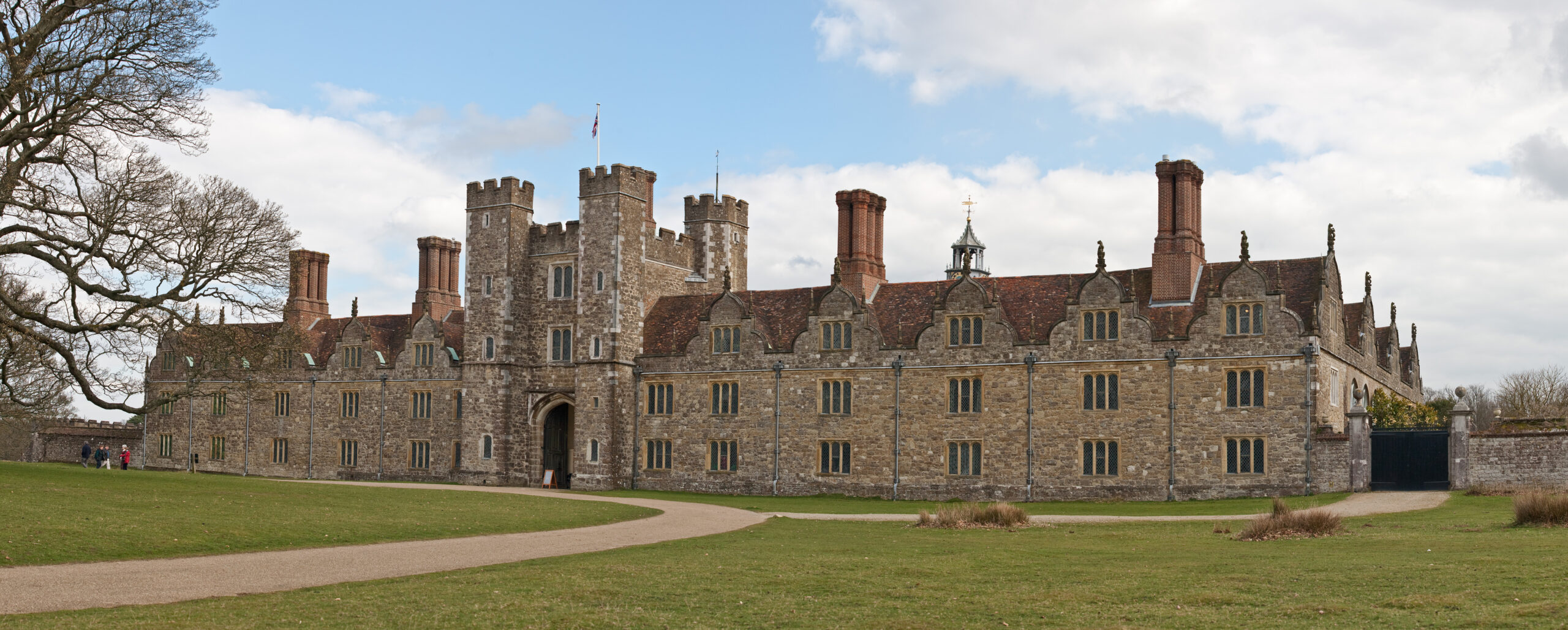
Knole is a historic estate in Kent, built in the late 1400s. It has 365 rooms, 52 staircases, 12 entrances, and 17 courtyards.
Naturally, an estate this large would need a large staff on hand to run things and keep up the house and grounds.
Today, it's cared for by England's National Trust, and is open to the public as a museum and event space.
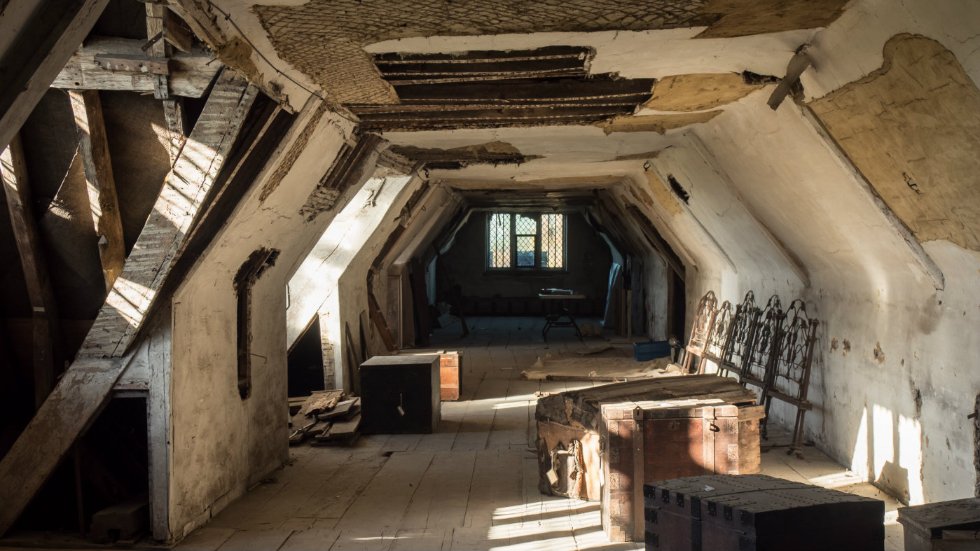
In January 2017, archaeologists were working in the attic of the estate's South Barracks as part of the building conservation project.
This project will allow more rooms in the estate to be open to the public, and may provide some glimpses into history.
Under the floorboards, the team found three letters dating from different decades in the early 17th century.
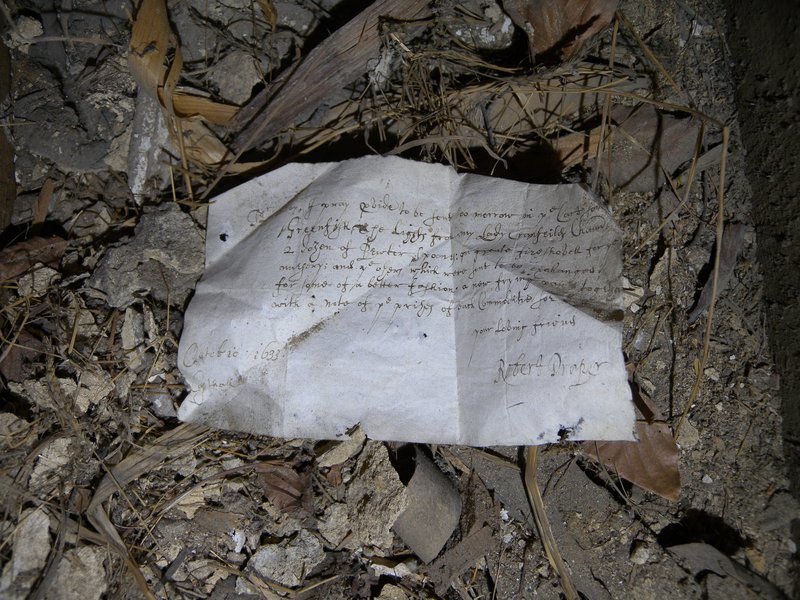
One of them, dated 1633, was a grocery list of sorts, requesting certain items. It read:
Mr Bilby, I pray p[ro]vide to be sent too morrow in ye Cart some Greenfish, The Lights from My Lady Cranfeild[es] Cham[ber] 2 dozen of Pewter spoon[es]: one greate fireshovell for ye nursery and ye o[t]hers which were sent to be exchanged for some of a better fashion, a new frying pan together with a note of ye prises of such Commoditie for ye rest.
Your loving friend,
Robert Draper
Octobre 1633
Copthall
We've left the original spelling and grammar. The letters in brackets have been added in by the National Trust to make it easier for the modern reader to understand.

Archaeologists were thrilled not only at the find itself, but also by how well the letters were preserved. Other than the letters, the only other things they found were some old nails and small animal bones.
Basically, the grocery list is asking for the transfer of some items between Copt Hall and Knole, which were about 36 miles apart.
The owner of Knole, Richard Sackville, had married Frances Cranfield, daughter of the Earl of Middlesex, who lived at Copt Hall. The marriage would have required the transportation of various goods.
As for the other letters, the one from 1622 is a sort of thank-you note to a benefactor for some gift.
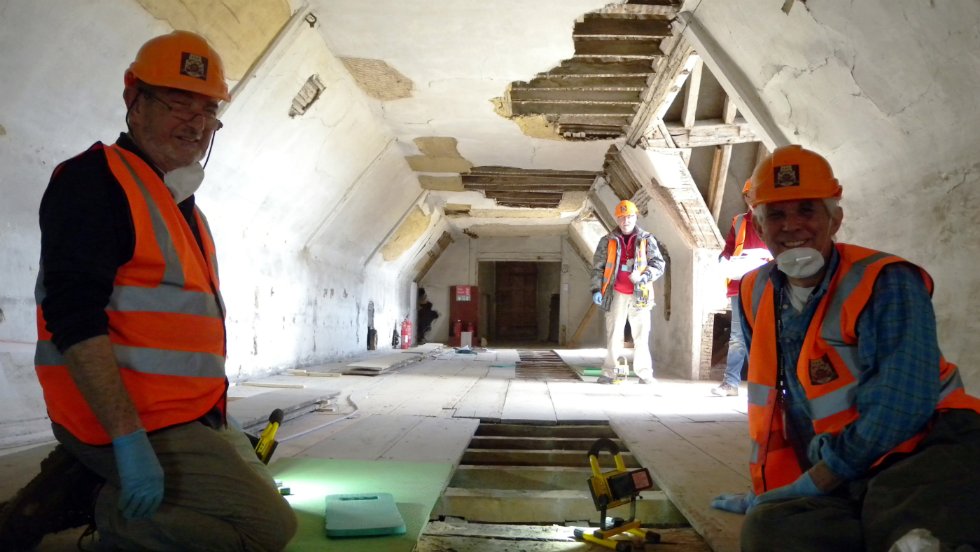
Jim Parker, one of the archaeology volunteers who found the letters, remembers the thrill of realizing what he was looking at under the floorboards.
His discovery even earned him the nickname "Jimdiana Jones."
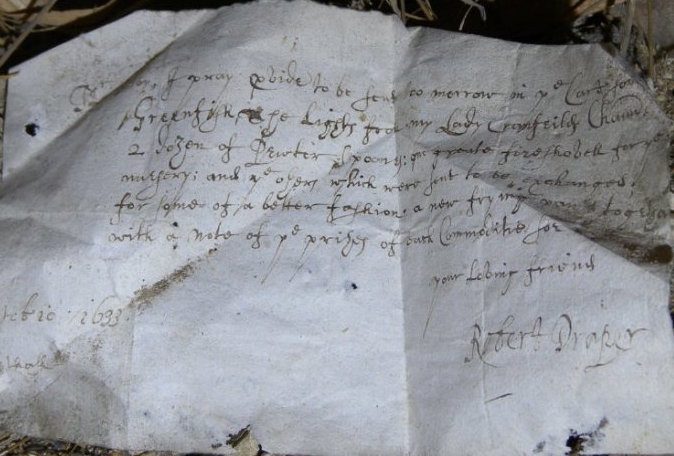
It's believed that Robert Draper, who wrote the note, must have been a high-ranking servant of Copt Hall, a sort of manager who oversaw the tasks at the manor. His refined handwriting suggests this.
Since he signed it "Your loving friend," he must have known Mr. Bilby fairly well.
It's an amazing window into the past.
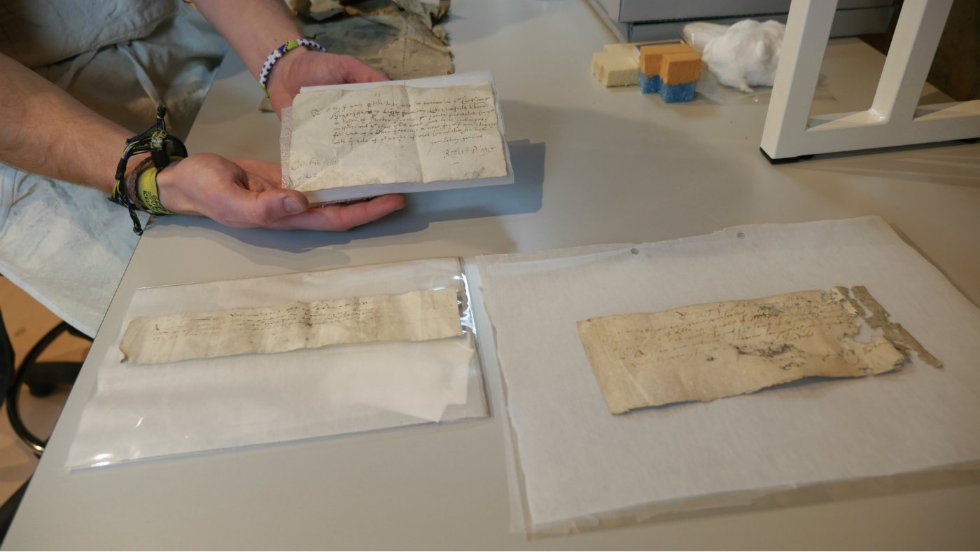
After being photographed where they were found for context, the letters were then carefully cleaned and smoothed so they could be stored.
"When you think that you're reading someone's handwriting from 400 years ago, it sends chills down your spine," said Jan Cutajar, an objects conservator with the National Trust.
The letters are now on display in Knole's visitors' center.
SHARE this amazing slice of history with anyone who loves peeking into the past.




